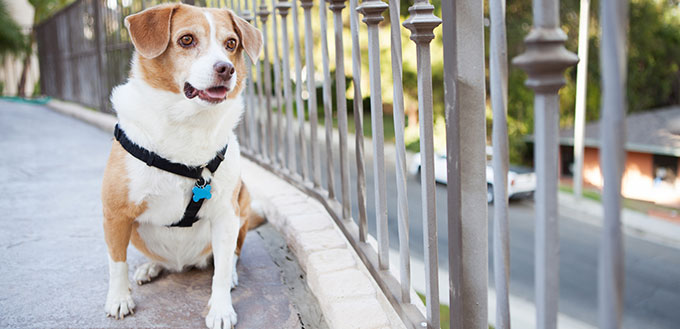There are all sorts of problems your dog may face as they get older, as well as conditions that they have from birth. One of these health concerns that may arise is dog deafness. You might think it would be obvious if your dog is becoming deaf, but deafness can come on quite subtly, and you may find yourself wondering ‘is my dog deaf or stubborn?’. If you want to know whether your dog is starting to grow deaf, there are three methods that can be used as steps to getting a diagnosis.
What Causes Deafness in Dogs?
First, you probably want to understand why your dog may be suffering with deafness. Essentially, there are three key causes of doggie deafness: conduction issues, nerve issues, and toxins. They may exist from birth, develop due to hygiene issues or illness, or develop naturally due to age.
- Conduction issues occur when sound waves cannot reach the inner ear. Generally, this is due to inflammation in either the outer or middle of the ear. Many illnesses, including tumors and damaged eardrums, can cause this.
- Nerve damage in the ear will also damage hearing, but could happen naturally due to the degenerative process of aging, or through tumors, infection, development issues, and trauma.
- Toxins may come into the body and cause deafness as a side effect of medication, such as chemotherapy, antibiotics, or antiseptics. They may also enter the body due to accidental ingestion, or a very unbalanced diet, as heavy metals like mercury, arsenic or lead can poison dogs.
It is also worth noting that some breeds and genes are more predisposed than others to some of the issues that cause deafness. For example, white fur appears to be an indicator of future deafness. It is estimated that over 30 breeds are susceptible to various causes of deafness. These breeds include:
- Dalmatians
- Miniature Poodles
- Beagles
- German Shepherds
- Jack Russell Terriers
- Maltese dogs
- Toy Poodles
- Australian Shepherds
- English Setters
- West Highland White Terriers
- Papillons
- Boston Terriers
- Rhodesian Ridgebacks
- Cocker Spaniels
If you own any of these breeds, it is not a certainty that they will develop hearing loss, but it is a good idea to know the signs and symptoms. This will help you notice if anything is going wrong, and may even allow you to intervene and treat your dog’s hearing loss before it deteriorates too much. This brings us to our first method for telling if your dog is deaf.

Look For Symptoms
Whether you are worried about your old dog or a new puppy, there are clear symptoms you can look for to see if your concerns have a foundation or not. It is worth noting, however, that if you are concerned about a newborn puppy, you should wait at least 14 days before trying any tests or looking for any symptoms. All puppies and all breeds are deaf for the first 10 to 14 days of their life because their ear canals remain closed.
Once your puppy is older than 14 days old, you can start looking for puppy deafness symptoms that will help you answer the question ‘is my puppy deaf or stubborn?’. Symptoms include:
- Biting harder than their litter mates as this indicates that they are not moderating their rough play in response to hearing protests from their brothers and sisters
- Being the last to feed because they are not hearing the bowl being prepared or placed on the floor
- Having less movement in their ears, particularly in response to the location of sounds that surround them
Symptoms of deafness in older dogs may be slightly different as a dog that is not born deaf may still exhibit a lot of the behaviors they learned when they could hear as puppies. Therefore, you should look out for:
- No longer appearing to be as obedient as they used to be, such as ignoring your calls and commands, particularly when they are not looking at you
- Being harder to wake up using noise, such as calling their name
- Other changes in habits that may result from hearing loss, such as no longer meeting you at the door when you come home from work
- Becoming more anxious and startling more often, particularly when the cause of the anxiety or shock had previously been making noise
- Becoming less frightened of previous phobias that were based on sound, such as the vacuum cleaner
You may also like our guide on the Best Supplements For Older Dogs.
Test Their Hearing
The second step is to devise a test for your dog’s hearing ability. It is always possible that your dog has just become more stubborn and more or less fearful in their old age, or that you have a very disobedient puppy. Testing your dog’s hearing directly will help you to gather more information about the cause of their behavior. There are a number of test variations that you can use.
- With puppies, you can test their ability to hear by switching to visual and non-auditory training cues, such as blowing on their face and using hand movements rather than saying ‘stop’ or yelling. If your puppy is refusing to train using these signs just as much as they ignore your verbal cues, they may not be deaf, but just difficult and stubborn. You may then want to contact a professional behaviorist to help you with training a disobedient puppy.
- For older dogs, you can use a loud sound and note their reaction. You can use anything as your dog hearing test sound, from clapping with your hands, whistling, or shaking their favorite biscuits. Use a variety of volumes from the same distance and see which ones get a reaction. If your dog does not respond to pan lids being smashed together, but does respond to the quieter sound of their favorite biscuits, they probably aren’t deaf.
It is important that you test all these sounds from a similar distance that is relatively far away from your dog, such as at the other side of a room. Creating noise near your dog may invalidate your test because a deaf dog’s other senses are often heightened, and they may be using them instead of their ears. For example, they may be feeling a breeze from moving objects or see movement out of the corner of their eye.
You should also consider that only one of your dog’s ears may be struggling with hearing loss. If this is the case, your tests should result in a confused dog who doesn’t really know where the noise is coming from. They may get up when they hear the sound, but then will appear to run around aimlessly and have a puzzled look on their face. A dog with good hearing will locate the sound and either instantly look at where it came from, or walk over to where it came from.
- You can also conduct a test in the park. As you are comparing their reactions at the park to their previous behavior, only you can truly tell if their reactions are different or slower than they should be. Quite simply, you should just try calling their name to see their reaction. A healthy dog will react by instantly moving their ears towards the sound, and responding as they always have, such as by returning to your side.
A dog that is struggling to hear you will not respond to your calls, their ears may move randomly, and they may appear distressed when quite far away from you. Distressed behavior could include their head flicking from side to side, trotting in circles, and turning to look at you frequently to reassure themselves that you are still there.
Related Post: Best Ear Cleaner for Dogs
Go To Your Vet
Finally, and perhaps most obviously, you should take your dog to the vet. Once you have tested your dog and found a number of signs and symptoms that make you concerned, your vet is the only person who can confirm a diagnosis. Make sure to relay to them all symptoms and medical history.
Your vet will test their hearing using similar techniques that you have tried, and may ask you to describe their normal behavior to help them conduct these tests, but they will also be able to check for medical causes of the deafness. Tests may include:
- An inspection for swelling or other blockages to the ear canals
- A Brainstem Auditory Evoked Response (BAER) test, which can either tell you whether your dog is deaf, or how deaf they are by measuring your dog’s brain activity in response to various clicking noises. This is, unfortunately, very expensive, and not all vets will have access to BAER equipment.

Treating Deafness in Dogs
Once you have a diagnosis, you will be in a better position to help your dog adjust to being deaf. Despite what you may have heard, you can teach an old dog new tricks, so you can work at visual cues and their other senses so that they are less easily startled. It is also possible for dogs to have hearing aids.
Treatment of hearing loss depends dramatically on the cause, however, and congenital deafness, which is genetic from birth, cannot be treated. It is also unfortunately unlikely that nerve damage can be repaired. You may be able to prevent further nerve damage, however, by treating the cause, and conduction issues caused by inflammation may also be able to be treated through surgery.
Sources:
- M Branis, Inner Ear Structure In The Deaf And Normally Hearing Dalmatian Dog, ScienceDirect
- Sandy Eckstein, Training and Caring for a Deaf Dog, Web MD
- Hearing Loss in Dogs, Pet MD







